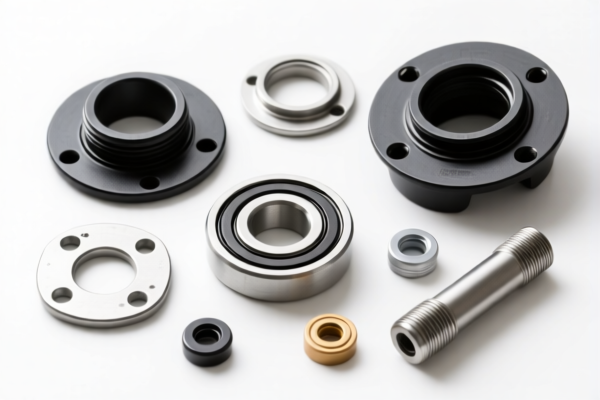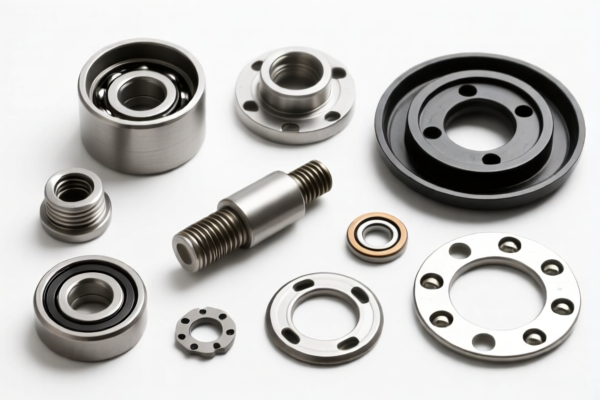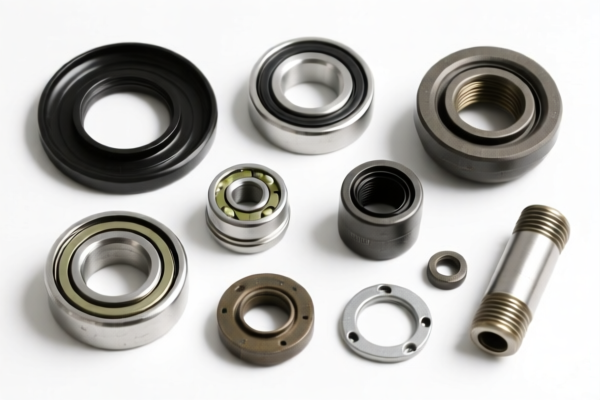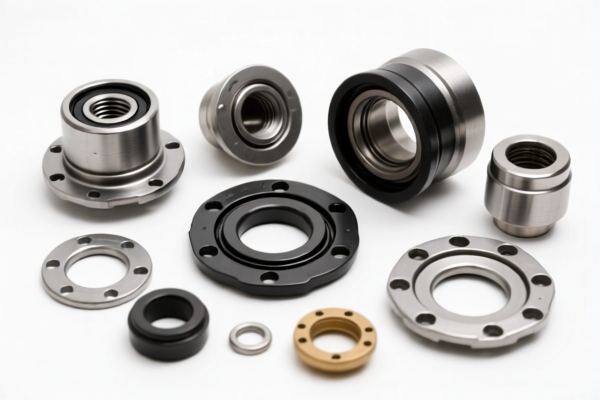| HS Code | Official Doc | Tariff Rate | Origin | Destination | Effective Date |
|---|---|---|---|---|---|
| 8487900080 | Doc | 83.9% | CN | US | 2025-05-12 |
| 8487900040 | Doc | 58.9% | CN | US | 2025-05-12 |
| 8466100110 | Doc | 58.9% | CN | US | 2025-05-12 |
| 8466911000 | Doc | 55.0% | CN | US | 2025-05-12 |
| 8503009520 | Doc | 83.0% | CN | US | 2025-05-12 |
| 8503009550 | Doc | 58.0% | CN | US | 2025-05-12 |
| 8548000000 | Doc | 55.0% | CN | US | 2025-05-12 |
| 7326908688 | Doc | 82.9% | CN | US | 2025-05-12 |
| 7326908688 | Doc | 82.9% | CN | US | 2025-05-12 |




Repair Parts
Repair parts are components used to restore the functionality of a damaged or malfunctioning item. They encompass a broad range of items, varying significantly in complexity and application depending on the product they are intended for.
Material
The materials used in repair parts are dictated by the original component's construction and the stresses it endures. Common materials include:
- Metals: Steel, aluminum, brass, copper, stainless steel – used for structural components, fasteners, and electrical contacts.
- Plastics: ABS, polycarbonate, nylon – used for housings, knobs, gears, and insulators.
- Rubber: Used for seals, gaskets, hoses, and vibration dampeners.
- Ceramics: Used in high-temperature or wear-resistant applications (e.g., ignition components).
- Glass: Used for screens, lenses, and bulbs.
- Electronic Components: Silicon, germanium, various alloys – used in circuit boards, semiconductors, and sensors.
Purpose
The primary purpose of repair parts is to:
- Restore Functionality: Replace broken or worn components to bring an item back to working order.
- Extend Product Lifespan: Avoid complete replacement of an item by addressing specific failures.
- Reduce Costs: Repairing is often more economical than replacing an entire product.
- Maintain Original Performance: Using correct replacement parts helps ensure the item functions as intended.
Function
Repair parts function by replicating the original component’s role within the larger system. This can involve:
- Structural Support: Replacing frames, brackets, or housings.
- Electrical Conductivity: Replacing wires, connectors, or circuit board components.
- Mechanical Movement: Replacing gears, bearings, or motors.
- Sealing and Insulation: Replacing gaskets, seals, or insulators.
- Fluid Transfer: Replacing hoses, pumps, or valves.
Usage Scenarios
Repair parts are used in a vast array of applications, including:
- Automotive: Replacing engine components, body panels, electrical systems.
- Electronics: Replacing screens, batteries, circuit boards, power supplies.
- Appliances: Replacing motors, heating elements, switches, control boards.
- HVAC Systems: Replacing compressors, fans, thermostats, ductwork.
- Plumbing: Replacing pipes, valves, faucets, fittings.
- Furniture: Replacing legs, frames, hardware.
- Machinery: Replacing gears, bearings, belts, seals.
Common Types
- OEM (Original Equipment Manufacturer) Parts: Identical to the parts originally used in the product, typically sourced directly from the manufacturer. Often highest quality but can be more expensive.
- Aftermarket Parts: Produced by companies other than the original manufacturer. Can offer lower costs but quality can vary.
- Used/Refurbished Parts: Previously used parts that have been inspected and restored to working condition. Most economical option, but reliability may be lower.
- Specific Component Parts: These are highly specific to the item being repaired and can include:
- Screws & Fasteners: Used to hold components together.
- Gaskets & Seals: Prevent leaks and maintain pressure.
- Bearings: Reduce friction in moving parts.
- Switches & Sensors: Control and monitor system functions.
- Circuit Boards: Control the electronic functions.
- Motors: Provide power for movement.
- Hoses & Belts: Transfer fluids or power.
- Screens/Displays: Provide visual output.
The term "repair parts" is broad and requires further specification to determine the correct HS code. Based on the provided reference material, several HS codes may be relevant depending on the composition and function of the repair parts. Here are potential HS codes, with detailed explanations based solely on the provided information:
- 8487900080: Machinery parts, not containing electrical connectors, insulators, coils, contacts or other electrical features, and not specified or included elsewhere in this chapter: Other Other. This code applies to non-electrical machinery parts. The basic tariff is 3.9%, with an additional 25.0% tariff, increasing to 30.0% after April 2, 2025. A further 25% tariff applies to steel or aluminum products, resulting in a total tariff of 83.9%.
- 8487900040: Machinery parts, not containing electrical connectors, insulators, coils, contacts or other electrical features, and not specified or included elsewhere in this chapter: Other Oil seals, other than those of chapter 40. This code is specifically for oil seals used in machinery, excluding those classified under Chapter 40. The tariff structure is similar to 8487900080, with a basic tariff of 3.9%, an additional 25.0% tariff, increasing to 30.0% after April 2, 2025, resulting in a total tariff of 58.9%.
- 8466100110: Parts and accessories suitable for use solely or principally with the machines of headings 8456 to 8465, including work or tool holders, self-opening dieheads, dividing heads and other special attachments for the machines; tool holders for any type of tool for working in the hand: Tool holders and self-opening dieheads Tool holders for forming-type or cutting-type dies. This code applies to tool holders specifically designed for machines within headings 8456 to 8465. The tariff structure is 3.9% basic tariff, 25.0% additional tariff, increasing to 30.0% after April 2, 2025, for a total of 58.9%.
- 8466911000: Parts and accessories suitable for use solely or principally with the machines of headings 8456 to 8465, including work or tool holders, self-opening dieheads, dividing heads and other special attachments for the machines; tool holders for any type of tool for working in the hand: Other: For machines of heading 8464: Cast-iron parts not advanced beyond cleaning, and machined only for the removal of fins, gates, sprues and risers or to permit location in finishing machinery. This code is for cast-iron parts used with machines of heading 8464, specifically those only cleaned and minimally machined. The tariff structure is 0.0% basic tariff, 25.0% additional tariff, increasing to 30.0% after April 2, 2025, for a total of 55.0%.
- 8503009520: Parts suitable for use solely or principally with the machines of heading 8501 or 8502: Other: Other Parts of motors. This code applies to parts specifically designed for motors of headings 8501 or 8502. The tariff structure is 3.0% basic tariff, 25.0% additional tariff, increasing to 30.0% after April 2, 2025. A further 25% tariff applies to steel or aluminum products, resulting in a total tariff of 83.0%.
- 8503009550: Parts suitable for use solely or principally with the machines of heading 8501 or 8502: Other: Other Parts of generators: Other. This code applies to parts specifically designed for generators of headings 8501 or 8502. The tariff structure is 3.0% basic tariff, 25.0% additional tariff, increasing to 30.0% after April 2, 2025, for a total of 58.0%.
- 7326908688: Other articles of iron or steel: Other: Other: Other: Other Other. This code applies to other articles of iron or steel. The tariff structure is 2.9% basic tariff, 25.0% additional tariff, increasing to 30.0% after April 2, 2025. A further 25% tariff applies to steel or aluminum products, resulting in a total tariff of 82.9%.
Important Note: The correct HS code depends on the specific material, function, and application of the repair parts. If the repair parts are made of steel or aluminum, an additional 25% tariff may apply.
Customer Reviews
No reviews yet.